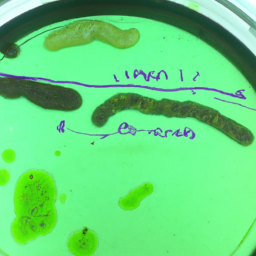which are the current diagnostic measures on the Helicobacter Pylori affection?

Uncovering the Impact of Helicobacter Pylori on Human Health
2023-02-15
Is Helicobacter Pylori dangerous? How shall we keep away from it
2023-02-16which are the current diagnostic measures on the Helicobacter Pylori affection?

which are the current diagnostic measures on the Helicobacter Pylori affection?
-
Table of Contents
“Uncovering the Truth: The Latest Diagnostic Measures for Helicobacter Pylori Infection.”
Introduction
Helicobacter pylori (H. pylori) is a type of bacteria that can cause infection in the stomach and small intestine. It is one of the most common causes of stomach ulcers and can also lead to other digestive problems. Diagnosis of H. pylori infection is important for proper treatment and management of the condition. Currently, there are several diagnostic measures available for the detection of H. pylori infection, including blood tests, stool tests, breath tests, and endoscopy. Each of these tests has its own advantages and disadvantages, and the choice of test depends on the individual patient’s needs and preferences. In this article, we will discuss the current diagnostic measures for H. pylori infection and their advantages and disadvantages.
What Are the Benefits and Risks of Testing for Helicobacter Pylori?
Testing for Helicobacter pylori (H. pylori) is a common procedure used to diagnose and treat a variety of gastrointestinal issues. H. pylori is a type of bacteria that can cause inflammation and infection in the stomach and small intestine. Testing for H. pylori can help identify the presence of the bacteria and determine the best course of treatment.
The primary benefit of testing for H. pylori is that it can help diagnose and treat a variety of gastrointestinal issues. H. pylori can cause a range of symptoms, including abdominal pain, nausea, vomiting, and bloating. Testing can help identify the presence of the bacteria and determine the best course of treatment. Treatment options may include antibiotics, proton pump inhibitors, or other medications.
Testing for H. pylori is generally safe and non-invasive. The most common test is a blood test, which is quick and painless. Other tests, such as a stool sample or endoscopy, may also be used. These tests are more invasive and may cause some discomfort.
The primary risk associated with testing for H. pylori is the potential for false positives or false negatives. False positives occur when the test indicates the presence of H. pylori when it is not actually present. False negatives occur when the test indicates the absence of H. pylori when it is actually present. This can lead to incorrect diagnosis and treatment.
In conclusion, testing for H. pylori can be beneficial in diagnosing and treating a variety of gastrointestinal issues. The test is generally safe and non-invasive, but there is a risk of false positives or false negatives. It is important to discuss the risks and benefits of testing with your doctor before proceeding.
How Accurate Are the Different Tests for Detecting Helicobacter Pylori?
Helicobacter pylori (H. pylori) is a type of bacteria that can cause infection in the stomach and small intestine. It is estimated that up to two-thirds of the world’s population is infected with H. pylori, and it is a major cause of peptic ulcers and gastritis. As such, it is important to be able to accurately detect H. pylori in order to diagnose and treat the infection.
There are several tests available for detecting H. pylori, including the urea breath test, stool antigen test, and serology test. Each of these tests has its own advantages and disadvantages, and the accuracy of each test varies depending on the individual patient.
The urea breath test is the most accurate test for detecting H. pylori. This test involves the patient drinking a solution containing urea, which is then broken down by the H. pylori bacteria in the stomach. The breakdown of the urea produces a gas that can be detected in the patient’s breath. This test is highly accurate, with a sensitivity of up to 95%.
The stool antigen test is also a reliable test for detecting H. pylori. This test looks for antigens, or proteins, that are produced by the H. pylori bacteria in the stool sample. This test is less accurate than the urea breath test, with a sensitivity of up to 80%.
The serology test is the least accurate test for detecting H. pylori. This test looks for antibodies in the blood that are produced in response to the H. pylori bacteria. This test is not as accurate as the other tests, with a sensitivity of up to 70%.
In conclusion, the urea breath test is the most accurate test for detecting H. pylori, with a sensitivity of up to 95%. The stool antigen test is also reliable, with a sensitivity of up to 80%, while the serology test is the least accurate, with a sensitivity of up to 70%.
What Are the Latest Diagnostic Tests for Helicobacter Pylori Infection?
Helicobacter pylori (H. pylori) is a type of bacteria that can cause infection in the stomach and small intestine. Diagnosis of H. pylori infection is important for the successful treatment of the infection. The latest diagnostic tests for H. pylori infection include serology, urea breath test, stool antigen test, and endoscopy.
Serology is a blood test that detects the presence of antibodies to H. pylori. The antibodies are produced by the body in response to the infection. This test is non-invasive and relatively inexpensive.
The urea breath test is a non-invasive test that measures the amount of carbon dioxide in the breath after the patient has ingested a urea solution. If the patient is infected with H. pylori, the bacteria will break down the urea and release carbon dioxide, which can be detected in the breath.
The stool antigen test is a non-invasive test that detects the presence of H. pylori antigens in the stool. This test is relatively inexpensive and can be used to diagnose H. pylori infection in children.
Endoscopy is an invasive procedure in which a thin, flexible tube with a camera is inserted into the stomach and small intestine. This procedure allows the doctor to directly visualize the stomach and small intestine and take biopsies if necessary.
These are the latest diagnostic tests for H. pylori infection. It is important to consult a doctor to determine which test is most appropriate for the individual patient.
Conclusion
The current diagnostic measures for Helicobacter Pylori infection include blood tests, stool antigen tests, urea breath tests, and endoscopy. Each of these tests has its own advantages and disadvantages, and the choice of which test to use depends on the individual patient’s situation. In any case, it is important to consult with a healthcare professional to determine the best course of action.
A company Etest Medical offers good helicobacter pylori test solution worldwidely.



